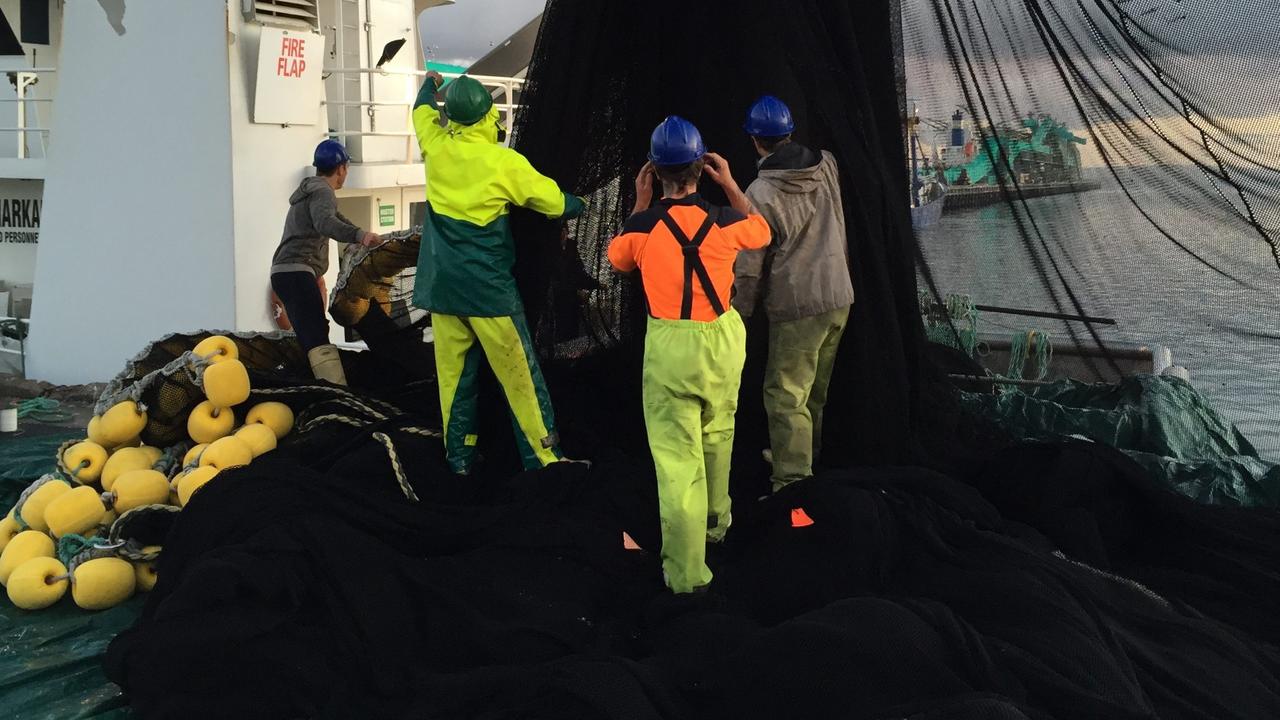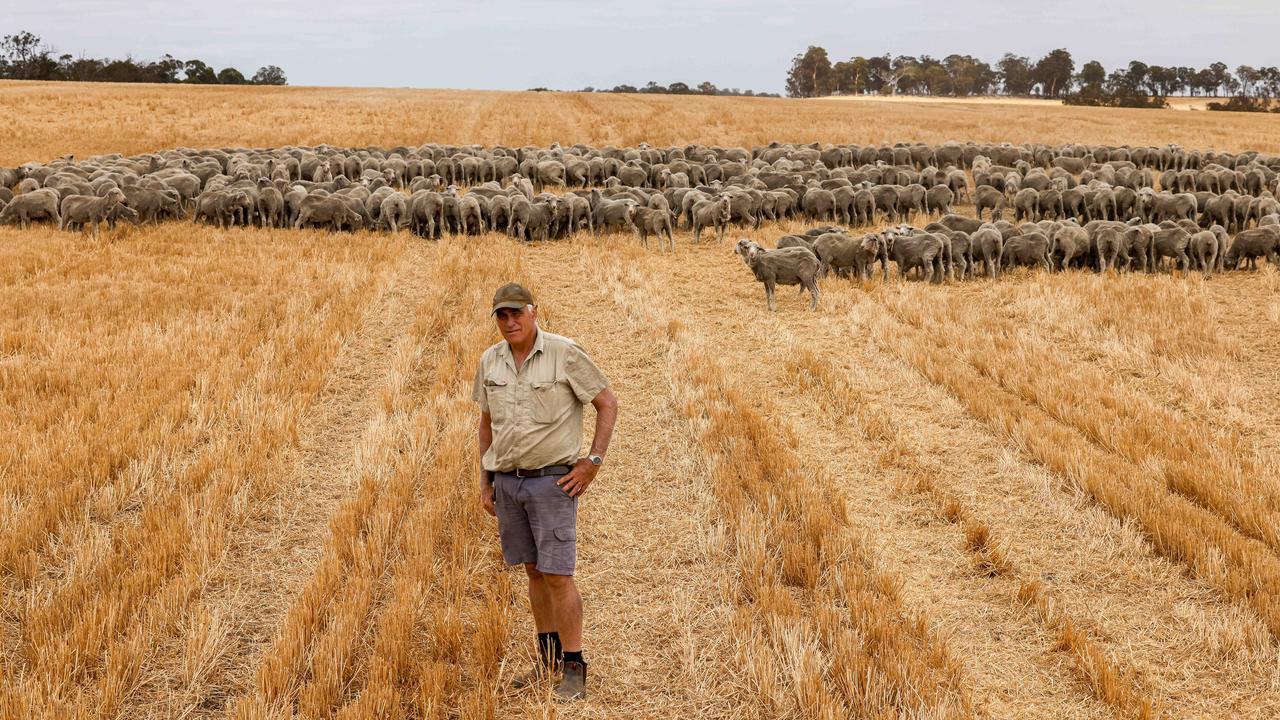Amid the rush to develop rare earth deposits, Wimmera farmers like Chris Johns are fighting back
Are critical minerals more important than agricultural land? In the rich fields of Victoria’s Wimmera area, farmers reckon they face the fight of their life as miners muscle in.
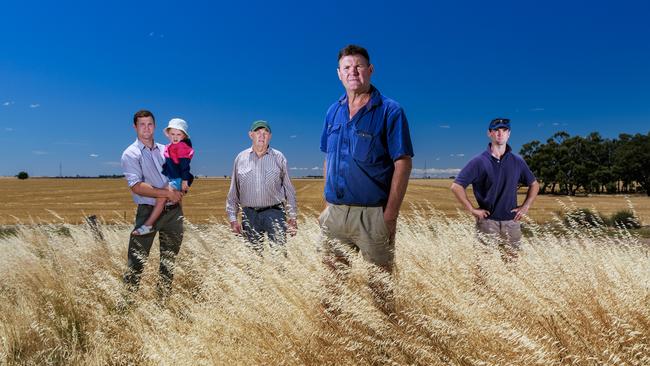
In the rich fields of Victoria’s Wimmera district, a small group of farmers reckon they face the fight of their life. Amid the rush to develop Australia’s critical mineral and rare earth deposits, local families who have worked their land for 140 years are facing off against mining companies promising deliver well-paid jobs and a boost to the Victorian economy.
At stake is the future use of some of Victoria’s best cropping land — and whether it could also deliver billions in future revenue from mineral sands and rare earth exports.
Wimmera district farmer Chris Johns and his son Lachie — along with their neighbours — are at the pointed end of that debate, as Chinese-backed WIM Resources pushes to develop a rare earth deposit on land at Dooen, about 20km outside of the regional centre of Horsham, that his family have owned and worked since 1884, through good times and bad.
But WIM wants to build a mineral sands and rare earth mine across the property, and that of Mr Johns’ neighbours, arguing its mine will create almost a thousand jobs in Victoria and deliver $5.7bn to Victoria’s economy over the 30-year life of its Avonbank project.
Only about nine farming families are affected by the footprint of the mine, and WIM says only a small portion of their land will be affected at any time.
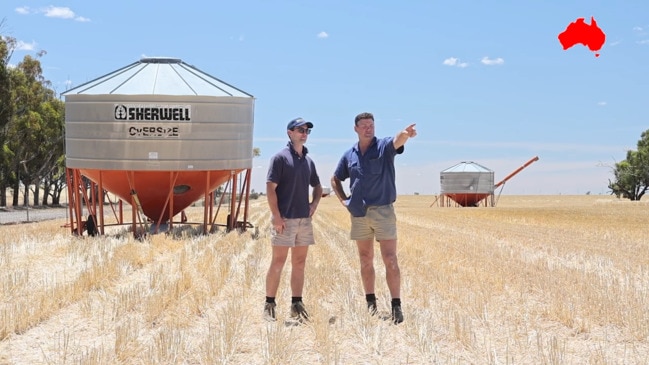
The company is understood to have offered a premium to current land valuations to buy properties in the region, and has also sought to sign land use and compensation agreements with local farmers.
But Mr Johns says his family, and the bulk of affected farmers, have no desire to sell — despite the fact WIM’s proposed mine could be running for decades. And they say they have no confidence the company will be able to make good on its promises to fully rehabilitate the farmland afterwards.
“I’d never sell the land no matter what. This is part of our part of our soul and it’s not just the house. You’ll find all farmers, they could show you every tree and every rock on their farm,” he said.
“This whole farm is our home. I’d never consider selling it.”
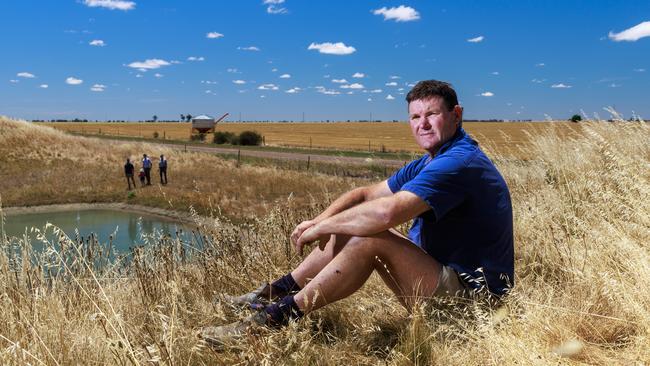
WIM project director Michael Winternitz told The Australian the company believed Avonbank could prove that mineral sands mining could coexist with the district’s rich farmland — and a test pit dug and rehabilitated by the company had produced crops for the last three years.
Avonbank has projected mine life of at least 30 years, and the company’s mining licence covers a 2500 hectare area, across the land of Mr Johns and neighbours.
WIM says that only about 300 hectares will be mined at any one time as it uses a strip-mining method, with the land progressively rehabilitated within four years of the mining area moving on.
WIM Resource’s Environmental Effects Statement (EES), released in April, the rich topsoil will be stockpiled separately for return as the pit is progressively closed.
Mr Winternitz acknowledged the treatment of farmland topsoil was a key concern of local farmers, saying it had been a topic of discussion at the panel hearing on the company’s EES held earlier this year.
“Part of the panel hearing was making sure we’re aligned with what the farmers wanted in the rehabilitation plan — and their expert broadly agreed with us, so we came to good alignment with the local farmers about how best they would like to see the lands put back,” he said.
But Mr Johns says the company has still been unable to guarantee that the topsoil returned will be that taken from the same farm — a particular concern for those crop producers that have changed their farming methods, at a cost of hundreds of thousands of dollars, to improve the quality of their soil.
The impacts of the mine will go far further than just the land being mined, Mr Johns says. One of their family homes sits within 800 metres of the pit, forcing the next generation of the family farmers to move out.
In addition, WIM plans to close the public road passing by the property for haulage, meaning the family will need permission — and an escort — to access the family home and equipment sheds.
“We’ve been told that we can’t live in the house here for 36 years if the mine goes ahead. This is our home — my son Lachie and his girlfriend live here. My little granddaughter, she’s the seventh generation of our family farming,” he said.
“They’ve just told us that they’ll simply relocate him. What does that mean? Where are you going to relocate to?”
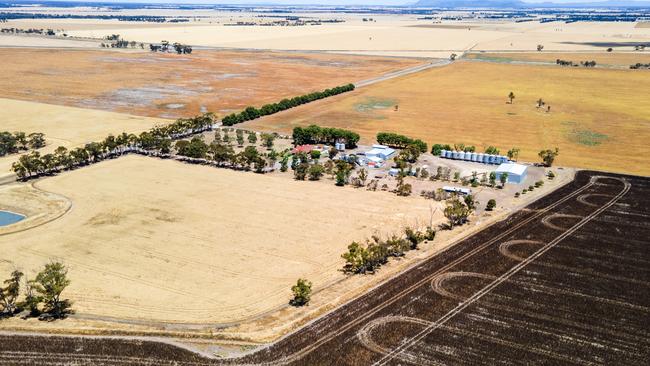
Another major concern for local farmers, even those not directly affected by mining on their land, is WIM’s proposal to stockpile concentrate at the Wimmera Intermodal Freight Terminal, ready to transport to shipping facilities at Portland, 215km to the south.
It will sit next to grain handling facilities at the same intermodal terminal, raising the risk of contamination from dust.
Any contamination, Mr Johns said, would not affect only the price of farmers’ products but the reputation of Australia’s agricultural sector.
Mr Winternitz said the company’s air quality report had been examined during the EES process, and the company was confident it could manage any dust risks.
WIM’s proposal is now sitting with Victorian planning minister Sonya Kilkenny for a final decision.
Mr Johns said local farmers are hopeful of a positive outcome. But, despite spending more than $100,000 on legal help and advice to oppose the project, Mr Johns says locals have little faith in the EES process, given WIM’s 6200 page approval documents were released for public comment in April — smack in the middle of sowing season, leaving little time for farmers to examine the document closely and respond.
And, if Ms Kilkenny approves Avonbank, the farming community will have only limited avenues to pursue opposition to the mine.
The legal position across most of Australia is clear. The Australian Constitution effectively vests control of the rights to minerals in the ground to the states, whether on crown land or freehold.
In the vast reaches of Australia’s iron ore heartland in the Pilbara in WA the issue is largely moot.
“We’re growing food for the world here.” — Chris Johns
While disputes still occur it’s difficult for pastoralists and graziers to argue that even the massive mines built in the region significantly reduce the amount of land available to them.
But Victoria is Australia’s most densely populated state, and the Wimmera region is now a prime cropping district for wheat, beans, canola and barley. The quality of the land varies greatly even in the 50km or so around the regional centre of Horsham but it is still prime land, with agricultural land values almost tripling since 2018, according to Rural Bank’s 2023 farm values report.
In Victoria the relevant minister can carve out farmland from a mining or exploration lease, if they decide there is a greater economic benefit to Victoria in continuing to use the land as agricultural land rather than as a mine.
Unless that happens, farmers are effectively forced to come to terms with mining companies through a land access agreement including compensation, or by simply selling the land outright.
But if an agreement can’t be reached, Victoria’s Mining Act allows WIM to refer the matter to the Victorian Civil and Administrative Tribunal for an adjudication on access and compensation — but the tribunal does not have the power to block a mining company’s access to the land.
Mr Winternitz told The Australian the company would prefer to sign access and compensation deals with farmers rather than force the issue through VCAT.
“We have to operate this mine for 30 years, so we simply must have a good relationship with the local community and our local landowners,” he said.
“At the end of the day, however, the Mining Act is there. And we will work within that mechanism. But we plan to engage very respectfully and with empathy with regards to land access.”
The debate over mineral sands and rare earth mining in the Wimmera is not just a new front in the age-old war between Australian farmers and miners. It also encapsulates broader geopolitical concerns about China’s domination of the global rare earth industry, and the rush by Australia, the US and other Western allies to develop alternative supply chains for critical minerals.
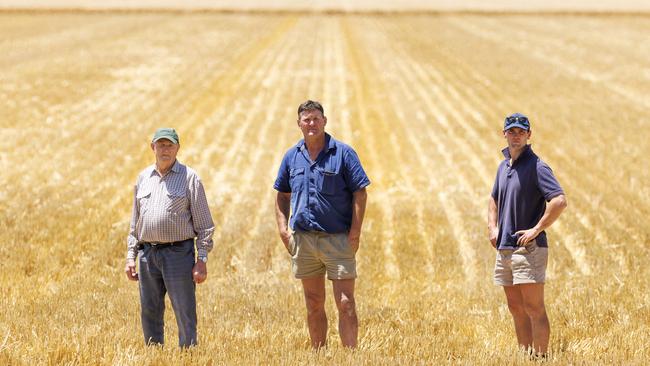
Western Victoria is rich in mineral sands deposits, and since the 1980s companies such as ASX-listed Iluka Resources have previously operated mines and processing facilities to exploit the deposits of zircon, ilmenite and rutile.
But their importance has risen in recent years as demand for rare earth elements has grown. Most mineral sands deposits come with some monazite ore, a prime source of light rare earth metals such as neodymium and praseodymium.
The Wimmera deposits also come with relatively high levels of xenotime ore, a source of highly valuable heavy rare earths such as dysprosium and terbium. And, while China dominates light rare earth refining and production, it has a near monopoly on the production of heavy rare earths.
But the bulk of those heavy rare earth ores come from just across the border in Myanmar, where supply has been disrupted this year amid ongoing unrest in the troubled country.
That disruption has coincided with increasing interest in Australian and other sources of heavy rare earths — most notably the fight for control of WA rare earth hopeful Northern Minerals, which controls one of the highest grade sources of the materials in the world.
In addition to WIM’s Avonbank deposit, four other rare earth projects sit in the same region: Iluka’s proposed Wimmera mine, the Goschen project controlled by ASX-listed VHM, and Murray Zircon’s WIM150 deposit.
Chinese rare earth giant Shenghe owns 9.9 per cent of WIM Resources, and has traditionally sought offtake agreements with the companies in which it has invested. ASIC records showing Chinese-registered company Guang Tong Developments holds another 28 per cent of WIM shares.
Shenghe has struck a preliminary agreement with VHM for offtake from Goschen, although that is yet to be consummated.
Murray Zircon is also backed by Chinese registered companies.
While Federal Treasurer Jim Chalmers has acted to prevent Chinese-linked buyers from building up a controlling stake in Northern Minerals, no restrictions apply to the destination of Australian exports of critical minerals.
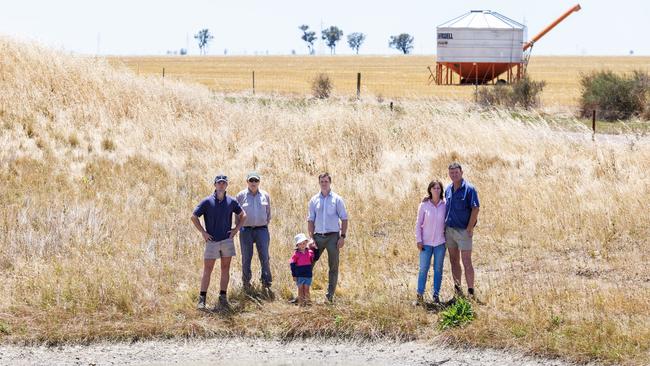
Mr Winternitz said WIM has not yet struck any offtake deals for Avonbank, but confirmed he expected Shenghe would likely be among those offering to buy concentrate produced at the mine. He said the company remained open to selling to any potential buyer, including locals such as Iluka Resources, which is build a rare earth refinery in WA.
For WIM, the argument in favour of the project is ultimately very simple: it rests on the jobs and revenue that mines deliver..
WIM says the mine will create almost 600 local full-time jobs in the Wimmera region, and deliver about $335m in total economic benefits.
Annual wages of about $54m will be delivered into the region, the company says — for an average wage of about $1850 a week, more than twice the median personal income of $772m recorded in the 2021 census.
Mr Johns says the local farmers believe their exports should be considered more important than the plethora of mining projects in the region, however.
“We’re growing food for the world here. We grow chickpeas and lentils — they go to Pakistan and India. We grow barley and that’s going back to China now. Our wheat is all premium grade here,” he said.
“As far as bringing jobs to Horsham, yes, it will do that. A certain amount of businesses will profit and do well out of the mine. But for the average person in Horsham, I can’t see how it will benefit them.
“The cost of living will go up. At the moment our health care is in a shambles because we haven’t got enough doctors in Horsham. We haven’t got enough childcare centres in Horsham. Dental is a six-month waiting list. And the roads are a real mess, already, before all the mining trucks. And I think before anything happens, we need to get all that set in place.”


